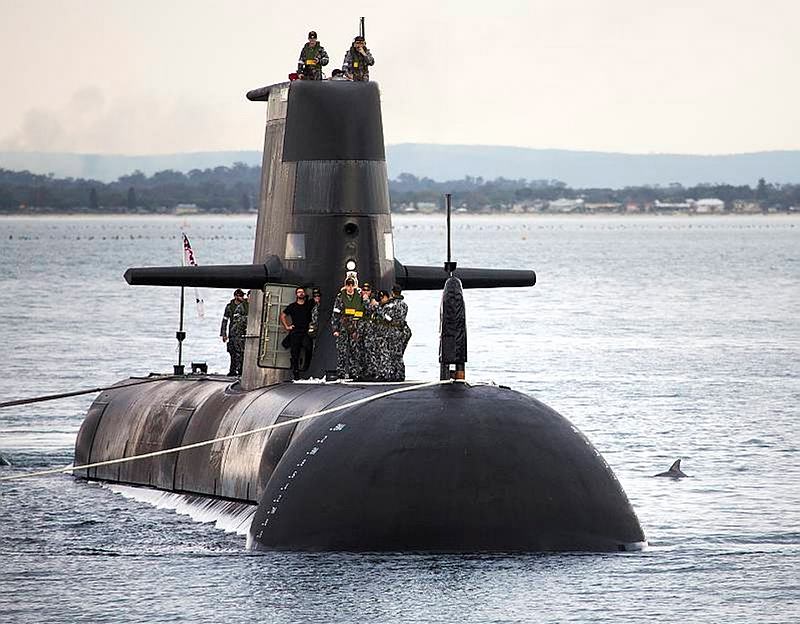
From an inauspicious and somewhat controversial start, the CEP has leapt into pride of place as the ‘process of choice’ for the Government when considering large maritime defence projects. Not only has it been used for the Future Submarine project (SEA 1000), but the Prime Minister has stated that it’ll be used for the Future Frigates (SEA 5000), and for the Offshore Patrol Vessels (OPVs) project (SEA 1180); collectively in the order of $90 billion.
This post looks at CEP in terms of 4Ps—process, politics and potential problems.
The process seems to be quite straightforward. Defence sets some broad issues to be responded to, selects a small number of potential suppliers, provides them with a few million dollars each to develop their responses, receives the responses and makes a recommendation to Government. The recommendation is for the selection of a long-term strategic partner with whom to develop the detailed design and ultimately have the ships/submarines constructed.
The SEA 1000 CEP appears to be thorough, even-handed and, as far as possible, transparent. The only issue is the decision that removed Sweden from the competition before it begun. It could be expected that the process for SEA 5000 will be similarly thorough, even-handed and, as far as possible, transparent. One issue for SEA 5000 will again be the potential limitation of the prospective international partners. The stated use of a CEP for the OPV project becomes more problematic as Australian shipyards other than Adelaide are potential builders, and there are many more potential designs. The way in which a CEP would be undertaken for this project is therefore unclear.
The politics are interesting—and somewhat opaque. First, the utilisation of a CEP for SEA 5000 and SEA 1180 means that the Government can argue that the CEP used for SEA 1000 wasn’t a ‘thought-bubble’, but a valid option within the normal way of doing business. The Prime Minister and the Defence Minister will also repeatedly say that the utilisation of a CEP for both submarines and ships is a necessity following the inactivity of the previous Government in this important area of national security, and is the only means to get the project acquisition schedules back on track. The Future Submarines experience has shown that the Government won’t shy away from limiting the number of runners at the starting gate.
The information provided from the CEP process will be of lesser fidelity than that of a typical tender process; arguably as the detailed design hasn’t been finalised. While Defence will no doubt do a good job of the evaluation process, the results will therefore be more amenable to interpretation. Simply put, the selection of the contestants and the lack of detail in the information provided means that it will be easier for the Government to make a decision other than the one that might be recommended by Defence.
The CEP for both frigates and submarines will circumvent the normal tendering processes and hence speed up the process to the point where a decision can be made. Not an acquisition decision based on the finer points of a complete tender process, but a politically-influenced decision on a long-term strategic maritime defence partner based on broad indications of cost, schedule, industrial issues, intellectual property, and capability. The decision on the selection of the international design partner for SEA 1000 is likely in the second quarter 2016. If the CEP for SEA 5000 commences in October as stated, then a decision for that project might be possible around the middle of 2016. That will clear the national security decks for the Abbott Government, and allow it to go to an election claiming that they’ve fixed the shipbuilding problem created by Labor, overcome years of inactivity on key defence issues, supported Australian manufacturing, saved jobs, etc.
Perhaps most importantly from the Government’s perspective, it provides a platform that might save some seats in South Australia.
The potential problems (read: risks) are associated with project cost, project schedule and whether the outcome (and the partner) will continue to provide the right capability into the future. As suggested by Mark Thomson in a previous post, we’ll only know what we’re really going to get, and the overall project cost, once the partner has been in place for some time—and there’ll be no turning back. There’s also a major problem in that political announcements seem to be driving the national security agenda, rather than real aspects of the nation’s security.
The decisions on SEA 1000, SEA 5000 and SEA 1180 will fundamentally alter the maritime capability landscape in Australia for the foreseeable future. The selection of the partner for each of these projects is critically important—and shouldn’t be made on a political whim.

